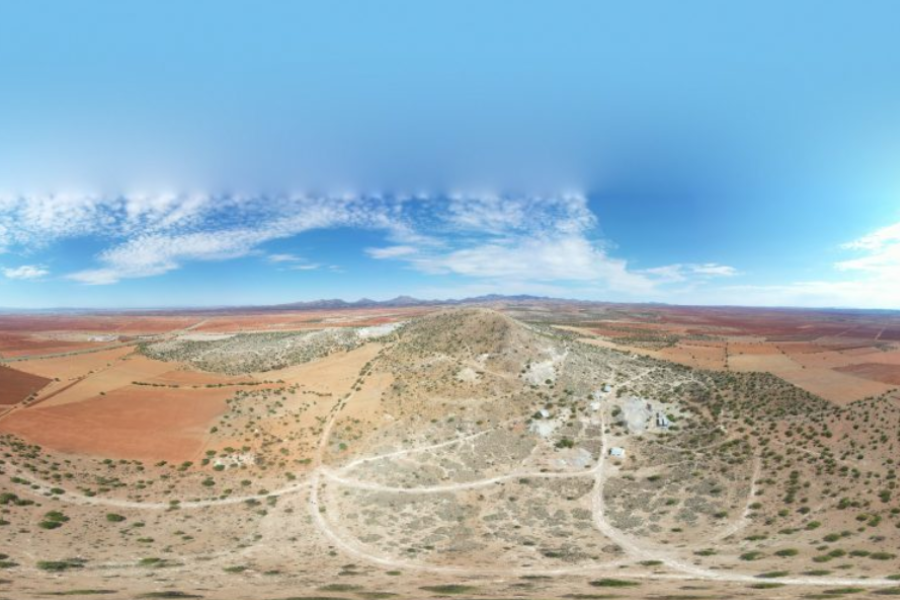The Historical Significance of Old Mexican Mining Ovens: Insights into Mexico’s Mining Evolution
Introduction
The tremendous and various scenes of Mexico are not just known for their rich social legacy and amazing normal excellence yet in addition for their authentic importance in the realm of mining. One of the less popular yet critical parts of this mining history is the old mexican mining ovens , referred to locally as “hornos de cal.” These stoves assumed a urgent part in the mining business of Mexico, especially during the provincial and early post-pioneer time frames. This article digs into the set of experiences, design, and social meaning of these old mexican mining ovens, investigating how they molded the monetary and social texture of the country.
Historical Background
The Ascent of Mexican Mining
Mining has been a foundation of Mexican history since pre-Columbian times, with old developments, for example, the Aztecs and Maya removing different minerals. Notwithstanding, it was during the Spanish provincial time frame that mining in Mexico went through huge extension. The Spanish triumph of Mexico in the mid sixteenth century carried with it progressed mining methods and an intense quest for valuable metals. The revelation of immense silver stores in locales like Zacatecas and Guanajuato changed Mexico into one of the world’s driving silver makers.
The Approach of Mexican Mining Broilers
As the mining business developed, so did the requirement for effective techniques to handle metal. The “hornos de cal” arose as an answer for convert crude mineral into usable materials. These broilers were principally utilized for the development of quicklime, a fundamental fixing in the refining system. Quicklime, or calcium oxide, was created by warming limestone in the stoves to high temperatures, separating it into lime and carbon dioxide.
Building Elements
Development and Plan
Old Mexican digging stoves are remarkable for their unmistakable engineering highlights. Regularly developed from nearby materials, for example, stone or adobe, these stoves were worked to endure the extraordinary intensity expected for lime creation. The plan of these broilers was much of the time impacted by neighborhood land conditions and the accessibility of materials.
A normal stove structure comprises of a few key parts:
Stack: A tall, thin fireplace took into consideration the effective ejection of gases and smoke created during the lime-consuming interaction.
Furnace Chamber: The primary chamber where limestone was set and warmed. This chamber was frequently round and hollow or vault molded to guarantee in any event, warming.
Firebox: Situated at the foundation of the stove, the firebox was where the fuel, normally wood or charcoal, was scorched to produce the fundamental intensity.
Drafts and Vents: These took into account air course and temperature control inside the stove.
Varieties Across Locales
The plan of mining stoves changed across various areas of Mexico, reflecting nearby assets and mining rehearses. In certain areas, broilers were incorporated into slopes or regular stone arrangements to upgrade their protection and intensity maintenance properties. In others, more intricate designs were built to oblige the particular necessities of bigger mining tasks.
The Job of Mining Stoves in the Mining Business
Lime Creation
The essential capability of these stoves was the creation of quicklime, which was fundamental in the purifying system used to separate silver and different metals from mineral. Quicklime was utilized as a transition to assist with isolating debasements from the metal and work on the effectiveness of the purifying system.
Monetary Effect
The creation of quicklime assumed an essential part in the financial success of Mexico during the provincial time frame. The interest for lime was high, for mining tasks as well as for development and agrarian purposes. The outcome of the mining business contributed fundamentally to Mexico’s monetary turn of events, and the effective activity of these stoves was key to this achievement.
Work and Local area
The activity of mining stoves was work escalated, requiring talented specialists who figured out the intricacies of lime creation. By and large, the labor force included nearby native individuals, who were frequently exposed to brutal working circumstances. The presence of these stoves likewise prompted the development of mining networks, with settlements conforming to significant mining destinations and adding to the improvement of foundation and nearby economies.
Social and Verifiable Importance
Tradition of Mining Broilers
The old mexican mining ovens are not only relics of a modern past; they are images of Mexico’s rich mining legacy. A considerable lot of these broilers have been protected and are presently perceived as significant social and verifiable milestones. They give important experiences into the mechanical headways and monetary acts of the past.
Protection and The travel industry
Endeavors to save and safeguard these noteworthy designs have expanded as of late. Many mining broilers are presently remembered for legacy destinations and exhibition halls, offering guests a brief look into Mexico’s mining history. These destinations assume a crucial part in teaching people in general about the verifiable meaning of mining and the commitments of the workforce in question.
Current Importance
The investigation of old mexican mining ovens additionally holds pertinence for current enterprises and authentic examination. The strategies utilized in these broilers give important illustrations in conventional lime creation techniques, which can illuminate contemporary practices and add to the comprehension of authentic mining advancements.
Difficulties and Future Bearings
Protection Endeavors
Notwithstanding the authentic significance of these broilers, many face difficulties connected with protection and safeguarding. Normal disintegration, defacement, and absence of financing can undermine the trustworthiness of these designs. Tending to these difficulties requires a purposeful exertion from nearby networks, history specialists, and moderates.
Advancing Mindfulness
Bringing issues to light about the meaning of these authentic destinations is pivotal for their protection. Instructive projects, local area inclusion, and the travel industry drives can assist with featuring the significance of saving old mexican mining ovens and guarantee that people in the future value their verifiable and social worth.
Exploration and Documentation
Continuous examination and documentation of mining broilers add to a more profound comprehension of their verifiable setting and innovative perspectives. Archeological examinations, verifiable records, and oral accounts can give important experiences into the job of these broilers in Mexico’s mining industry.
Conclusion
The old mexican mining ovens, or “hornos de cal,” address a captivating part in Mexico’s rich history of mining and industry. These designs are not just a demonstration of the mechanical developments of the past yet in addition an image of the monetary and social elements that formed the country. As we proceed to investigate and protect these verifiable milestones, we gain a more prominent appreciation for the tradition of mining in Mexico and the persevering through effect of these wonderful broilers. Through protection endeavors, instructive drives, and proceeded with research, we guarantee that the tale of Mexico’s mining stoves stays an energetic piece of our verifiable and social legacy.
FAQs
1. What are old Mexican mining ovens?
Old Mexican mining ovens, known locally as “hornos de cal,” are historical structures used primarily for the production of quicklime. These ovens were crucial in the mining industry, especially during the colonial and early post-colonial periods in Mexico. They were designed to heat limestone to produce quicklime, which was used in the refining process of metals like silver.
2. How did the old Mexican mining ovens function?
These ovens functioned by heating limestone at high temperatures to produce quicklime (calcium oxide). The process involved placing limestone in the furnace chamber, where it was exposed to intense heat from the firebox below. The resulting quicklime was then used in various industrial processes, including metal refining.
3. What materials were used in the construction of old Mexican mining ovens?
Old Mexican mining ovens were typically constructed from locally available materials such as stone or adobe. The design often reflected the local geology and resources, with some ovens built into hillsides or natural rock formations to enhance their thermal efficiency and durability.
4. Why were old Mexican mining ovens important to the mining industry?
These ovens were essential for producing quicklime, a key ingredient in the extraction and refining of metals like silver. Quicklime was used as a flux to separate impurities from the ore, improving the efficiency of the refining process and contributing to Mexico’s status as a leading silver producer during the colonial era.
5. How did the operation of these ovens impact local communities?
The operation of these ovens was labor-intensive and required skilled workers. Local indigenous populations often worked in harsh conditions to maintain the ovens and produce quicklime. The presence of mining ovens also led to the development of mining towns and infrastructure, which had lasting effects on local economies and communities.
6. What is the current status of old Mexican mining ovens?
Many of these historical ovens have been preserved and are now recognized as important cultural and historical sites. They are often included in heritage tours and museums, helping to educate the public about Mexico’s mining history and the role these ovens played in it.
7. What challenges are faced in preserving old Mexican mining ovens?
Challenges in preserving these ovens include natural erosion, vandalism, and insufficient funding for conservation efforts. Addressing these issues requires coordinated efforts from local communities, historians, and conservationists to ensure the long-term preservation of these significant historical structures.
8. How can people learn more about old Mexican mining ovens?
People interested in learning more about old Mexican mining ovens can visit heritage sites, museums, and historical tours that feature these structures. Additionally, academic research, historical records, and local cultural initiatives provide valuable insights into their history and significance.
9. Why is it important to study and preserve old Mexican mining ovens?
Studying and preserving these ovens is crucial for understanding Mexico’s mining history, technological advancements, and the social and economic impacts of the mining industry. Preservation efforts help maintain a tangible connection to the past and contribute to the broader understanding of Mexico’s cultural heritage.
Get the inside scoop on celebrity fashion and red carpet looks at SyncTimes.co.uk





